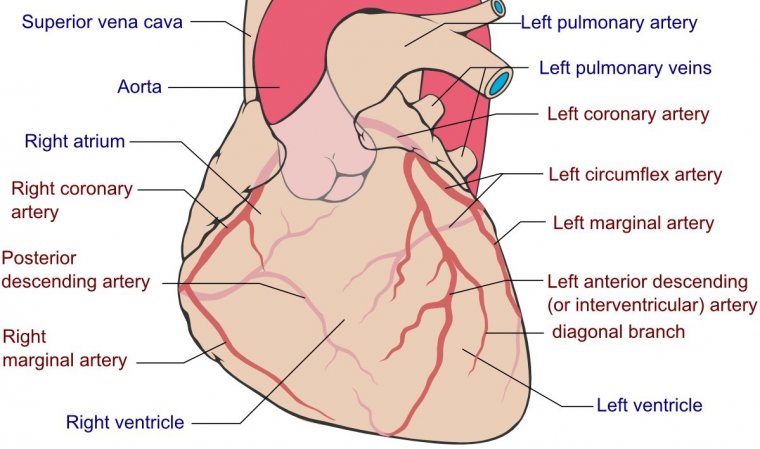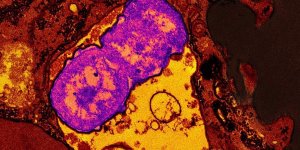| Health / Health News |
SARS-CoV-2 infects coronary arteries, increases plaque inflammation
SARS-CoV-2, the virus that causes COVID-19, can directly infect the arteries of the heart and cause the fatty plaque inside arteries to become highly inflamed, increasing the risk of heart attack and stroke, according to a study funded by the National Institutes of Health.

Coronary arteries. Patrick J. Lynch/Wikimedia Commons
In the study, researchers focused on older people with fatty buildup, known as atherosclerotic plaque, who died from COVID-19. However, because the researchers found the virus infects and replicates in the arteries no matter the levels of plaque, the findings could have broader implications for anybody who gets COVID-19.
Though previous studies have shown that SARS-CoV-2 can directly infect tissues such as the brain and lungs, less was known about its effect on the coronary arteries.
Researchers knew that after the virus reaches the cells, the body’s immune system sends in white blood cells known as macrophages to help clear the virus.
In the arteries, macrophages also help remove cholesterol, and when they become overloaded with cholesterol, they morph into a specialized type of cell called foam cells.
The researchers thought that if SARS-CoV-2 could directly infect arterial cells, the macrophages that normally are turned loose might increase inflammation in the existing plaque, explained Chiara Giannarelli, M.D., Ph.D., associate professor in the departments of medicine and pathology at New York University’s Grossman School of Medicine and senior author on the study.
To test their theory, Giannarelli and her team took tissue from the coronary arteries and plaque of people who had died from COVID-19 and confirmed the virus was in those tissues.
Then they took arterial and plaque cells – including macrophages and foam cells – from healthy patients and infected them with SARS-CoV-2 in a lab dish. They found that the virus had also infected those cells and tissues.
Additionally, the researchers found that when they compared the infection rates of SARS-CoV-2, they showed that the virus infects macrophages at a higher rate than other arterial cells.
Cholesterol-laden foam cells were the most susceptible to infection and unable to readily clear the virus.
This suggested that foam cells might act as a reservoir of SARS-CoV-2 in the atherosclerotic plaque. Having more build-up of plaque, and thus a greater number of foam cells, could increase the severity or persistence of COVID-19.
The researchers then turned their attention to the inflammation they predicted might occur in the plaque after infecting it with the virus. They quickly documented the release of molecules, known as cytokines, that are known to increase inflammation and promote the formation of even more plaque.
The cytokines were released by infected macrophages and foam cells. The researchers said this may help explain why people who have underlying plaque buildup and then get COVID-19 may have cardiovascular complications long after getting the infection.
YOU MAY ALSO LIKE





